Adaptive Features Of Terrestrial Animals
However, habitat features vary across tropical deciduous forests, temperate. These animals have well developed sense organ, which helps them to look for food in the dark night or by mere movement of their prey.
Class IV AdaptationsHow Animals Survive
The land animals, defined by zoology, are those that comprise those who inhabit the earth.

Adaptive features of terrestrial animals. External nostrils are absent in cormorants and pelicans. Besides these important factors such as light, temperature and water, other chemical and nutritional factors also play great role in adaptations. Snakes , rabbits, mice and foxes live in burrows.
Additionally, terrestrial animals generally use different locomotor strategies than aquatic organisms, although there is some overlap. List some features of terrestrial animals. Many animals are able to engage in certain behaviors which have no discernible function and may.
Many animals are adapted to living on the trees. These special adaptive features are common to most of the terrestrial animals. Most of the vertebrates except fishes and some secondarily aquatic forms are adapted to terrestrial life.
Terrestrial animals breathe through skin or nostrils, have differently adapted bodies, and exchange of gases is done from air, whereas, an aquatic breathe through their skin or gills. Accordingly, they show different adaptive features. The adaptation of terrestrial animals and plants are dependent on the type of habitat they live in.
These animals have well developed sense organ, which helps them to look for food in the dark night or by mere movement of their prey. Some terrestrial animals have sharp teeth with pointed canines and sharp claws to catch their prey. What are the adaptation of terrestrial animals?
So, most of them have lungs. Land animals breathe air directly from the atmosphere. The habitat on land is called a terrestrial habitat, whereas, the habitat in water is called an aquatic habitat.
Animal that live on land are called terrestrial animal. Adaptation characters of terrestrial animals are as follows: The limbs are long and strong.
What are terrestrial animals write their two adaptive features? Distinct features adopted by tropical animals. Animals living in the desert have thick skin which protects them from the sun.
Lions, tigers, horses, dogs and cats are some of the terrestrial animal. Animals that live on land either on the surface of the ground or in burrows below the surface of the ground are known as terrestrial animals. Entering upon the terrestrial scene, the reptiles had little competition from other animals.
To better understand how adaptation work… Some terrestrial animals have sharp teeth with pointed canines and sharp claws to catch their prey. Add to my workbooks (0) download file pdf.
This adaptive feature allows the animal to respire by exposing a little part of the body out of water. Some terrestrial animals have sharp teeth with pointed canines and sharp claws to catch their prey. All living things have adaptations, even humans.
In such conditions, a dominant group soon extends into a variety of specializations. Terrestrial animals have legs which help the to walk on land aquatic animals have streamed shaped body which help them to move in water. What are the adaptations of terrestrial animals?
The adaptation of animals and plants to their environment is a series of varied biological processes with varying purposes, but the general purpose is the continued survival of the species. It also prevents water loss from their bodies. The adaptive features of terrestrial and aquatic animals?
Scorpion, rattle snake and desert tortoise. Another example of adaptation in animals is the monkey. Special adaptations such as camouflage, migration and hibernation.
Insects do not have lungs. These animals have well developed sense organ, which helps them to look for food in the dark night or by mere movement of their prey. In whales, a sphincter muscle guards the external nostril.
• aquatic animals are the animals that live in water. Is tiger a terrestrial animal? Their body are situated to live on land.
This is key to the difference between an animal's adaptation and ability. Your body is ready to crawl, walk, run, climb or jump, depending on the ecosystem in which they live. It has a dense tree population with significantly high precipitation.
These impelling factors have caused the adaptive radiations amongst animals. By such extension, the descendants of one original type are able to exploit all the possibilities of the environment. Tropical rainforests are home to several different types of animal species.
An adaptation is a characteristic of a living thing that helps it survive in its environment. The body is streamlined which helps them for swift movement. Some adaptation of camel, (ship of the desert), to live in desert are given below.
These special adaptive features are common to most of the terrestrial animals.

Class IV AdaptationsHow Animals Survive

Adaptive features of terrestrial animals and plants YouTube
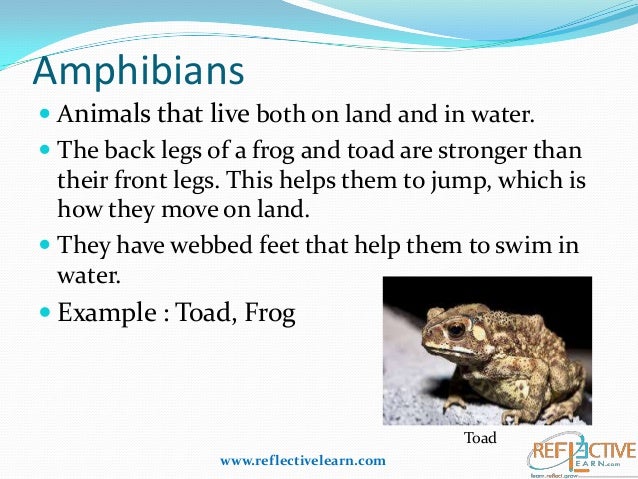
Class IV AdaptationsHow Animals Survive

Class IV AdaptationsHow Animals Survive
Class IV AdaptationsHow Animals Survive
Adaptations In Animals Faulkner

Class IV AdaptationsHow Animals Survive
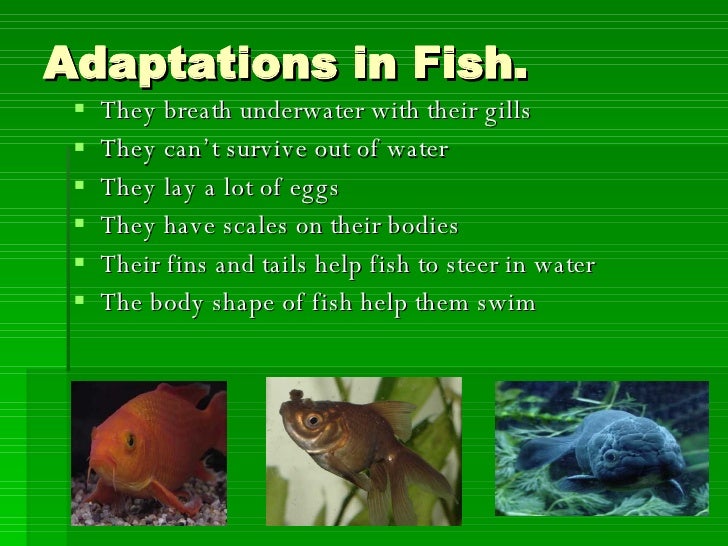
Adaptations In Animals Faulkner

Class IV AdaptationsHow Animals Survive
Adaptations Of Aquatic Animals Powerpoint

Adaptations in Animals Video 2 YouTube

Class IV AdaptationsHow Animals Survive
Lesson 4 Animal Adaptation Teaching Resources
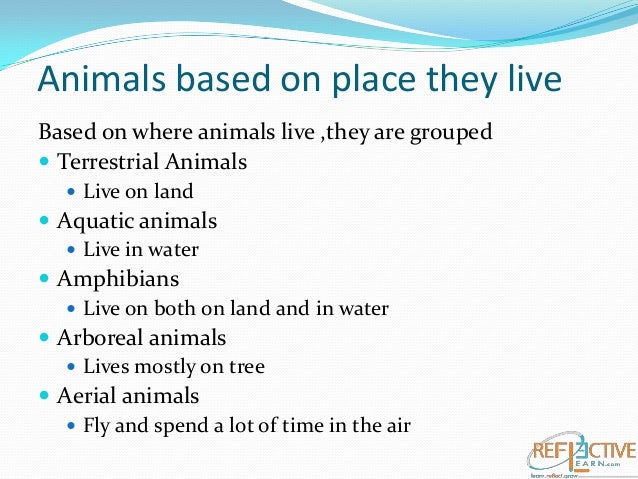
Class IV AdaptationsHow Animals Survive

Adaptations in animals p6 elearning 2015 day 1

Class IV AdaptationsHow Animals Survive
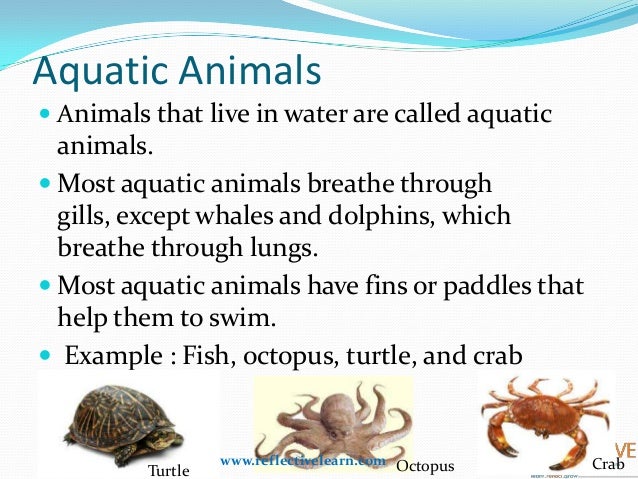
Class IV AdaptationsHow Animals Survive

Adaptations in Animals Habitats Terrestrial Aquatic
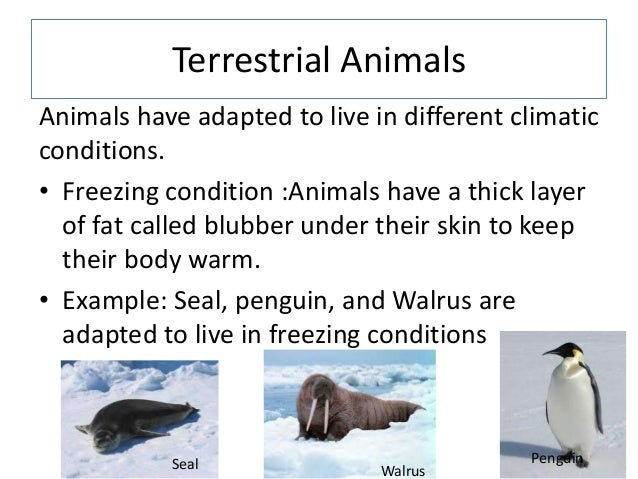

Post a Comment for "Adaptive Features Of Terrestrial Animals"